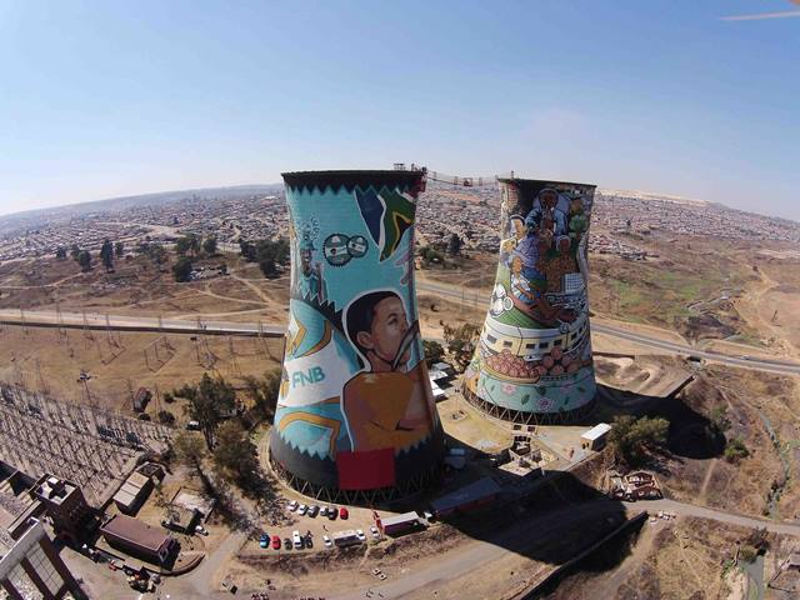The smart Trick of Johannesburg North Attractions That Nobody is Talking About
The smart Trick of Johannesburg North Attractions That Nobody is Talking About
Blog Article
A Biased View of Johannesburg North Attractions
Table of ContentsJohannesburg North Attractions - TruthsOur Johannesburg North Attractions DiariesLittle Known Questions About Johannesburg North Attractions.The 7-Second Trick For Johannesburg North AttractionsRumored Buzz on Johannesburg North AttractionsFascination About Johannesburg North Attractions
The city grew on the side of the Witwatersrand Key Reef, a subterranean stratum of gold-bearing quartz-silica empire that arcs for hundreds of miles below the Highveld - Johannesburg North attractions. Many of the gold mines in the city ceased operation in the 1970s, but in its day the Witwatersrand gold market accounted for more than 40 percent of the world's annual gold production.Johannesburg has a warm environment. Summer season temperature levels balance concerning 75 F (24 C); wintertime temperatures average concerning 55 F (13 C) and just periodically dip listed below cold. The city delights in concerning eight hours of sunshine daily in both winter and summertime. Rainfall standards concerning 28 inches (700 millimetres) per year, yet the complete differs considerably from year to year.
What rain the city receives falls virtually exclusively in the summertime, commonly in magnificent late-afternoon electric storms. Air contamination presents a substantial issue, especially in the winter season, when thermal inversions impede the westward circulation of air from the Indian Ocean. Pollution is most severe in the densely cleared up Black areas on the city's perimeter, where many residents still depend on coal for gas.

Little Known Facts About Johannesburg North Attractions.
The equilibrium of the city is inhabited by whites. Lodging differs in character and top quality.
Physical growth, although somewhat restricted by transport, proceeded swiftly as immigration to South Africa, and Johannesburg specifically, raised substantially. This issue was resolved in the 1930s when the car was presented in automation to South Africa. Vehicles were, essentially, confined to the affluent, and permitted them to relocate to the north of the city and commute right into the centre.
A lot of bad residential areas were mixed, with inadequate blacks and whites living with each other, although the rich residential areas were usually scheduled for whites. This changed with the election of the National Party in the 1948 political elections, who began to formalise the system called racism. Racism officially marked which suburban areas each race could reside in under the Group Locations Act.
The previous system of eleven numbered areas was reorganised in 2006. Marshalltown, as seen from the top of the Carlton Centre. The M1 and M2 run behind the structures, and the southern residential areas extend past the highway border. The central city of Johannesburg lies within the city's Area F. The number of people living in the inner city on an informal basis is unknown, as lots of are unlawful immigrants. The unemployment, education my explanation and learning, and age accounts of the area are all unknown, due to the problem of obtaining reputable information concerning the location.
The Of Johannesburg North Attractions
Centred on the CBD, the area consists of the residential areas of Yeoville, Bellevue, Troyeville, Jeppestown, and Berea to the east. To the west it spreads out to Pageview (Johannesburg North attractions) and Fordsburg. There are tiny commercial areas to the south, such as City West-Denver and Benrose. Around 800,000 commuters pass through the internal city everyday, and it operates as a regional purchasing node for site visitors from the southerly suburban areas. Yeoville and Bellevue have a mix of apartment or condo buildings and solitary domestic systems on little lots. The area is located on a mountainous divide that runs from eastern to west.

Johannesburg Stadium, a training ground for both the Golden Lions and Orlando Pirates, is nearby. The eastern suburbs of Johannesburg lie in the city's 7th [] and 9th [] regions. The location is also functionally incorporated with East Rand boundary towns beyond the official boundary of Johannesburg, such as Bedfordview and Edenvale (both component of Ekurhuleni Metropolitan District).
Everything about Johannesburg North Attractions
R. Tambo International Flight Terminal). The eastern suburban areas are a few of the earliest areas of Johannesburg, there are large communities of Jewish and other European histories, the bulk of the populace is English speaking. There are three golf training courses in addition to a number of secured ridges with viewsites. There are a number of well-developed and up-market amusement and purchasing areas in the east such as the Eastgate Buying Centre and the Greenstone mall.
Initially developed to house male migrant employees, several have actually been improved as houses for pairs and households. The suburban area was not historically allowed to develop work centres within the area, so practically all of its residents are commuters to other parts of the city.
What Does Johannesburg North Attractions Do?
The property locations in the northern suburban areas are mainly official, with no significant locations of informal housing, or real estate that lacks an irreversible structure. This is a well established area, there is a trend of click reference land usage change from property to commercial, particularly along primary arterial roadways and around established nodes.
The next area is well connected to road networks, particularly along the north-south axis formed by the M1 and N1. Roadways to the east and west are much less well developed, as there are no highways taking a trip because instructions. Towards the northern border of the city, the density of advancement reduces, leaving huge locations of untaught land around Midrand.
Johannesburg North Attractions Can Be Fun For Anyone
The very first suburban area to the north of the internal city is Parktown, which is situated on a hill overlooking the inner city and Hillbrow. It has many affluent locals and Edwardian-design estates, along with the Education and learning and Clinical campuses of the University of the Witwatersrand. The big concrete Charlotte Maxeke Johannesburg Academic Hospital dominates the horizon of Parktown.
Report this page